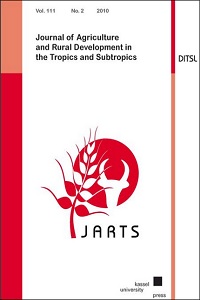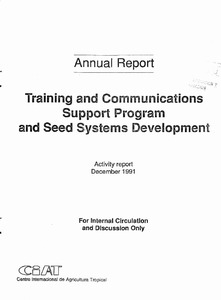land use
AGROVOC URI: http://aims.fao.org/aos/agrovoc/c_4182
The value of tropical forest to local communities: complications, caveats, and cautions
The methods used to value tropical forests have the potential to influence how policy makers and others perceive forest landsforestlands. A small number of valuation studies achieve real impact. These are generally succinct accounts supporting a specific perception. However, such reports risk being used to justify inappropriate actions. The end users of such results are rarely those who produced them and misunderstanding of key details is a concern. One defence is to ensure that the ultimate users appreciate shortcomings and common pitfalls.
Traditional forms of soil fertility maintenance
Several traditional methods of maintaining soil fertility in bean-based cropping systems are reviewed as follows: visoso, large- scale chitemene, ngoro or matengo pit (Mbinga District, Tanzania), mambwe land-use system of northern Zambia (fundikila), mounds of the Wafipas (SW Tanzania), tumba land-use system (southern Tanzania), guie (central highlands of Ethiopia), mafuku in Zaire, termite mounds, agroforestry, relay intercropping systems, coffee- banana-bean cropping system of the Wahayas of Bukoba (Tanzania), removal of maize tassels (northern Malawi), and storage of nutrients in weeds (
Throughfall and soil properties in shaded and unshaded coffee plantations and a secondary forest: a case study from Southern Colombia
In Colombia coffee production is facing risks due to an increase in the variability and amount of rainfall, which may alter hydrological cycles and negatively influence yield quality and quantity. Shade trees in coffee plantations, however, are known to produce ecological benefits, such as intercepting rainfall and lowering its velocity, resulting in a reduced net-rainfall and higher water infiltration.
Training and Communications Support Program Annual Report 1991
Tikiwiki y Mapserver: herramienta colaborativa y mapas en línea para el monitoreo de clima y vegetación en Colombia usando información satelital
Trajectories of rice-based farming systems in mainland Southeast Asia
This review has drawn on published research and the collective insights of a small team of experienced researchers to identify important trajectories in rice-based farming systems and to draw out the implications for agricultural research as a basis for discussion within ACIAR and the broader research community working on smallholder rice-based farming systems in MSEA.
The underlying causes of forest decline
Loggers, miners and rural communities all exploit forests in unsustainable ways in search of profits and means of subsistence. They are the primary actors in forest decline and their immediate motivations are the direct causes of deforestation and degradation. However, these motivations are determined, through complex causation chains, by deeper and much more fundamental forces: the underlying causes of deforestation. Effective action against forest decline requires an understanding of these underlying causes and their distant impacts on forests.
Transforming the global landscape
Rapid land transformation driven by large scale investments is one of the big trends defining this century. In a virtual briefing for the Global Donor Platform members CIAT agriculture expert Deborah Bossio dismisses the cry for more investments often heard in development circles. From her perspective a lack of investments is not the problem. The more pressing question is whether these large scale investments could be sustainable and socially inclusive. How are they going to play out in the end?
Towards an integrated global framework to assess the impacts of land use and management change on soil carbon: Current capability and future vision
Intergovernmental Panel on Climate Change (IPCC) Tier 1 methodologies commonly underpin project-scale carbon accounting for changes in land use and management and are used in frameworks for Life Cycle Assessment and carbon footprinting of food and energy crops. These methodologies were intended for use at large spatial scales. This can introduce error in predictions at finer spatial scales. There is an urgent need for development and implementation of higher tier methodologies that can be applied at fine spatial scales (e.g.
The use of herders' accounts to map livestock activities across agropastoral landscapes in Semi-Arid Africa
Improved understandings of the agricultural and range ecologies of semi-arid Africa require better information on the spatiotemporal distribution of domestic livestock across agropastoral landscapes. An empirical GIS-based approach was developed for estimating distributions of herded livestock across three agropastoral territories (around 100 km2 each) over a two-year period.







